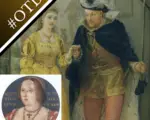
What happened on this day in history, 8th January, in Tudor times?
Let me share with you some of the events that took place on this day in the reigns of the Tudor kings and queens…
[Read More...]
What happened on this day in history, 8th January, in Tudor times?
Let me share with you some of the events that took place on this day in the reigns of the Tudor kings and queens…
[Read More...]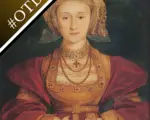
What happened on this day in Tudor history? Let me share with you some events from 3rd January during the reigns of the Tudor monarchs…
1521 – Pope Leo X issued the papal bull Decet Romanum Pontificem excommunicating reformer, German priest and professor of theology Martin Luther from the Catholic Church. See below.
1540 – Official reception of Anne of Cleves at Greenwich Palace. See below.
1541 – Anne of Cleves visited Hampton Court Palace to greet her former husband, Henry VIII, and his new wife, Catherine Howard, and to exchange New Year’s gifts.
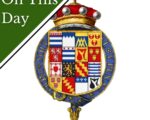
On this day in Tudor history, 14th October 1593, in the reign of Queen Elizabeth I, soldier and Lord Deputy of Ireland, Arthur Grey, 14th Baron Grey of Wilton, died at his home of Whaddon in Buckinghamshire. He was buried there.
Grey had a reputation for radical Protestantism.
[Read More...]
On this day in Tudor history, 16th September 1539, in the reign of King Henry VIII, nobleman, soldier and adventurer Walter Devereux, 1st Earl of Essex, was born at Chartley in Staffordshire.
Devereux was the eldest son of Sir Richard Devereux and Dorothy Hastings, and the father of Elizabeth I’s favourite Robert Devereux, 2nd Earl of Essex.
[Read More...]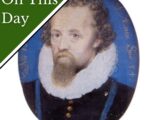
On this day in history, 8th September 1603, in the reign of King James I and just a few months after the death of Elizabeth I, courtier George Carey, 2nd Baron Hunsdon, died.
Carey was the son of Henry Carey, 1st Baron Hundson, and grandson of Mary Carey (née Boleyn).
He served Elizabeth I as Marshal of the Household, Justice of the Peace, Lord Lieutenant of Hertfordshire, Captain of the Isle of Wight, member of Parliament, Captain of the Gentlemen Pensioners, Lord Chamberlain and Privy Councillor.
[Read More...]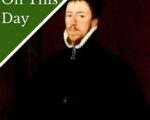
On this day in Tudor history, 7th September 1571, Thomas Howard, 4th Duke of Norfolk, was arrested for his part in the Ridolfi Plot.
This plot aimed to assassinate the Protestant Queen Elizabeth I and replace her with Catholic Mary, Queen of Scots.
Norfolk confessed to corresponding with Mary’s supporters and was taken to the Tower of London. He was executed on 2nd June 1572 after being found guilty of high treason.
[Read More...]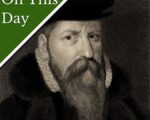
On this day in Tudor history, 20th August 1580, in the reign of Queen Elizabeth I, soldier and administrator Sir George Bowes died at Streatlam, County Durham.
Bowes was buried in the family vault at Barnard Castle Church.
Bowes had served Elizabeth I as a member of the Council of the North and the Ecclesiastical High Commission for York, a Justice of the Peace and sheriff, and as the Earl of Sussex’s Deputy in Co. Durham and Richmondshire, and Provost Marshal.
Bowes had also been chosen to escort Mary, Queen of Scots from Carlisle to Bolton Castle in 1568.
[Read More...]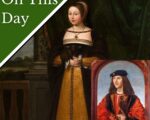
On this day in Tudor history, 8th August 1503, King Henry VII’s eldest daughter, Princess Margaret Tudor, married King James IV of Scotland at Holyrood Abbey.
Margaret was just thirteen years old and James was thirty, and their marriage had been arranged by the 1502 Treaty of Perpetual Peace between England and Scotland.
[Read More...]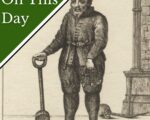
On this day in Tudor history, 2nd July 1594, in the reign of Elizabeth I, Robert Scarlett (Old Scarlett), sexton at Peterborough Cathedral, was buried at the cathedral, apparently aged 98, although another source states that he was a bit younger.
A verse accompanying his portrait in the cathedral states that Scarlett buried two queens, Catherine of Aragon and Mary, Queen of Scots , but it is not known whether this is true. He is also said to have buried a court fool known as Edward the Fool.
[Read More...]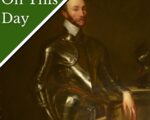
On this day in Tudor history, the night of 20th/21st June 1585, Henry Percy, 8th Earl of Northumberland, died at the Tower of London.
Northumberland was found dead in bed with a gunshot wound and on 23rd June an inquest in the Star Chamber ruled that he had committed suicide. However, it was rumoured by Catholics that he had been murdered by Sir Christopher Hatton on the orders of Elizabeth I’s government. They claimed that he had been shot in the chest three times, which was not consistent with suicide.
Northumberland had been imprisoned in the Tower in January 1584 for his Catholic beliefs and his involvement in plots to do with Mary, Queen of Scots. He was laid to rest in the chapel of St Peter ad Vincula at the Tower.
[Read More...]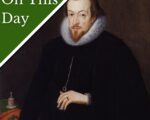
On this day in history, 24th May 1612, courtier and statesman, Robert Cecil, 1st Earl of Salisbury, died at Marlborough in Wiltshire. He had been diagnosed with two large tumours in August 1611 and was on his way home from taking the waters at Bath when he died.
Robert Cecil served Queen Elizabeth I as Secretary of State from 1596 and was retained in that office by James I. He also served James as Lord High Treasurer from 1608. He was still serving in both those offices at his death.
[Read More...]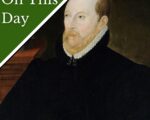
On this day in Tudor history, 14th May 1571, Matthew Stewart, Earl of Lennox and regent to the young King James VI of Scotland, held the “Creeping Parliament” in Edinburgh.
It was called the Creeping parliament because members had to crawl on their hands and knees into the Canongate to avoid being shot by the supporters of the abdicated Mary, Queen of Scots, who held Edinburgh Castle.
[Read More...]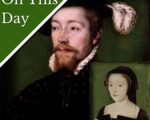
On this day in Tudor history, 9th May 1538, King James V of Scotland married Marie de Guise, or Mary of Guise, by proxy.
James V was the son of King James IV of Scotland and Margaret Tudor, eldest daughter of King Henry VII, and Marie was the daughter of Claude, Duke of Guise, and Antoinette of Bourbon. They’d both been married before. Marie had been married to Louis II of Orléans, Duke of Longueville, who died after less than 3 years of marriage, and James had been widowed just months after his marriage to Madeleine of France.
[Read More...]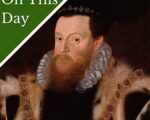
On this day in Tudor history, 5th May 1586, in the reign of Queen Elizabeth I, fifty-six-year-old Sir Henry Sidney died. His body was buried in the Sidney Chapel at Penshurst and his heart in Ludlow, where he lived as President of the Council in the Marches of Wales.
[Read More...]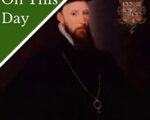
On this day in history, 11th April 1609, in the reign of King James I, conspirator, patron and collector, John Lumley, 1st Baron Lumley, died at his London home.
Lumley made a garden in honour of Elizabeth I, as an apology to her, and is known to have possessed a full-length portrait of Anne Boleyn.
Here are a few more facts about this Tudor baron…
[Read More...]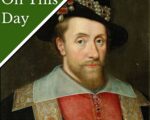
On this day in history, 5th April 1603, twelve days after the death of Queen Elizabeth I, the last Tudor monarch, King James VI of Scotland left Edinburgh, bound for London. He was now King of Ireland and England, as King James I, as well as being King of Scotland.
Thirty-seven-year-old James, who was the son of Mary, Queen of Scots, and her second husband, Henry Stewart, Lord Darnley, had received news of Elizabeth’s death late on 26th March, when an exhausted Sir Robert Carey had arrived at Holyrood. James had been in bed, but Carey was escorted to his chamber, where he knelt by him, and as Carey recorded, “saluted him by his title of England, Scotland, France, and Ireland”. In reply, James said, “I know you have lost a near kinswoman, and a loving mistress: but take here my hand, I will be as good a master to you, and will requite this service with honour and reward.”
[Read More...]
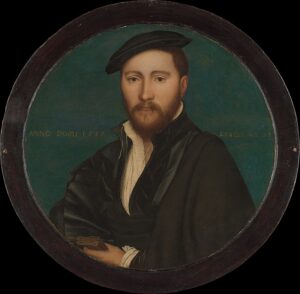 On this day in Tudor history, 30th March 1587, in the reign of Elizabeth I, Sir Ralph Sadler died. He was in his 80th year.
On this day in Tudor history, 30th March 1587, in the reign of Elizabeth I, Sir Ralph Sadler died. He was in his 80th year.
Sadler was a diplomat and administrator who worked as Thomas Cromwell's secretary before being noticed by Henry VIII.
At his death, he was one of the richest men in England.
Here are a few more facts about him…
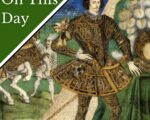
On 18th March 1601, just six days before the day of Queen Elizabeth I, soldier, secret agent and rebel Sir Christopher Blount was executed on Tower Hill for high treason.
He was accused of treason following his involvement in the rebellion of his stepson, Elizabeth’s former favourite, Robert Devereux, 2nd Earl of Essex.
[Read More...]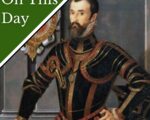
On this day in Tudor history, 17th March 1570, in the reign of Queen Elizabeth I, William Herbert, 1st Earl of Pembroke, soldier, courtier and landowner, died at Hampton Court, aged sixty-three.
Here are some facts about this Tudor earl, who was known as Black Will Herbert and had a queen as a sister-in-law…
[Read More...]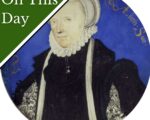
On this day in Tudor history, on the evening of 9th March 1578, in the reign of Queen Elizabeth I, sixty-two-year-old Margaret Douglas, Countess of Lennox, died.
Margaret had been recorded as suffering from a colic but the fact that she had dined with Robert Dudley, Earl of Leicester, two days before, led to rumours that she had been poisoned. However, there was no evidence to support the rumour. Margaret was buried at Westminster Abbey on 3rd April 1578.
Margaret Douglas was the daughter of Margaret Tudor, dowager queen of Scotland, by her second husband, Archibald Douglas, 6th Earl of Angus, making her the granddaughter of King Henry VII and the niece of King Henry VIII. Margaret was also the mother-in-law of Mary, Queen of Scots, whose second husband was Margaret’s son, Henry Stuart, Lord Darnley, and the grandmother of James VI of Scotland/James I of England, and the ill-fated Lady Arbella or Arabella Stuart.
[Read More...]
On this day in Tudor history, 24th February 1540, in the reign of King Henry VIII, courtier, author and administrator, Henry Howard, Earl of Northampton, was born at Shottesham in Norfolk.
Northampton was the second son of courtier and poet Henry Howard, Earl of Surrey, and his wife, Lady Frances de Vere.
Let me give you a few facts about this Tudor earl…
[Read More...]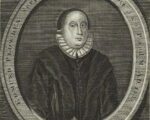
On this day in Tudor history, 6th February 1585, lawyer, legal scholar and law reporter, Edmund Plowden, died in London.
Plowden was laid to rest in the Middle Temple Church.
Cambridge University’s libraries and the British Library contain manuscripts of his commentaries and opinions, and he is known for his 1571 volume of law reports covering cases during the reigns of Edward VI, Mary I and Elizabeth I.
[Read More...]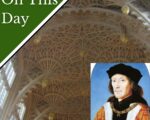
On this day in Tudor history, 24th January 1503, the foundation stone of King Henry VII’s chapel, a large Lady Chapel, at Westminster Abbey, was laid.
At the time, Henry VII planned for the chapel to be a shrine to King Henry VI, who was expected to be canonised, but this never happened.
The chapel was completed in 1516, in the reign of Henry VII’s son, King Henry VIII, and became the burial place of fifteen kings and queens, including Henry VII and his wife, Elizabeth of York, who have beautiful gilt-bronze effigies, and their grandchildren Edward VI, Elizabeth I and Mary I, and great-granddaughter, Mary, Queen of Scots. Others buried there in the Tudor period include, Lady Margaret Beaufort, Henry VII’s mother, and Lady Margaret Douglas, his granddaughter.
[Read More...]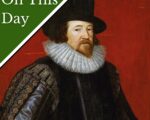
On this day in Tudor history, 22nd January 1561, Francis Bacon, Viscount St Alban, was born at York House in the Strand, London.
[Read More...]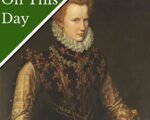
On this day in Tudor history, 6th January 1538, in the reign of King Henry VIII, Jane Dormer, Duchess of Feria, was born at Eythrope in Buckinghamshire.
Jane was a favourite of Queen Mary I, and was the one Mary trusted on her deathbed to deliver her jewels to her successor and half-sister, Elizabeth I. She married Gómez Suarez de Figueroa, Count of Feria, later Duke of Feria, in December 1558.
[Read More...]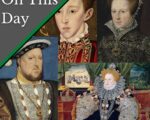
On this day in Tudor history, 6th December 1573, in the reign of Queen Elizabeth I, Sir Hugh Paulet died at his home in Hinton St George in Somerset.
Paulet distinguished himself as a soldier in Henry VIII’s reign, and in Edward VI’s reign he served as Governor of Jersey. Although he was a Protestant, he served as Vice-President of the Welsh Marches in Mary I’s reign, and went on to have a successful career in Elizabeth I’s reign.
Paulet was an important man and a royal servant, but still managed to die a natural death at his home.
Find out more about Sir Hugh Paulet…
[Read More...]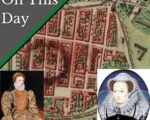
On this day in Tudor history, 16th November 1601, Charles Neville, 6th Earl of Westmorland, died in Nieuwpoort in Flanders.
The nobleman and rebel had fled into exile following the failure of the Northern Rebellion, also known as the Rising of the North or the Revolt of the Northern Earls, a plot to release Mary, Queen of Scots, from prison and to overthrow Elizabeth I.
Unfortunately, Westmorland didn’t learn his lesson and was involved in a further plot. He died in debt and separated from his wife and daughters.
Find out more about Charles Neville, 6th Earl of Westmorland…
[Read More...]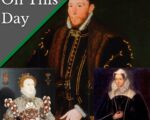
This day in Tudor history, 9th November 1569, is the traditional date given for the start of the Rising of the North, the only major armed rebellion of Elizabeth I’s reign.
The rising is also known as The Northern Rebellion or Revolt of the Northern Earls.
Charles Neville, 6th Earl of Westmorland, and Thomas Percy, 7th Earl of Northumberland, led this uprising against Queen Elizabeth I. The rebellion sought to depose her, replace her with Mary, Queen of Scots, and restore Catholicism.
But what happened?
Find out about the 1569 rebellion and the fate of the Northern Earls…
[Read More...]
On this day in Tudor history, 22nd October 1577, in the reign of Queen Elizabeth I, Henry Parker, 11th Baron Morley, died in Paris.
Morley was a Roman Catholic who had fled abroad in 1570 after refusing to subscribe to Elizabeth I’s “Act of Uniformity” and having been implicated in the 1569 Rising of the North.
Find out more about Morley, who was the nephew of Jane Boleyn, Lady Rochford, and his rather interesting family, with their connections to the trial of Mary, Queen of Scots and the Gunpowder Plot…
[Read More...]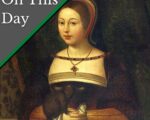
On this day in Tudor history, 18th October 1541, Margaret Tudor died of a stroke at Methven Castle, Perthshire, Scotland. She was laid to rest at the Carthusian Priory of St John in Perth, which was later destroyed.
Margaret Tudor was the sister of King Henry VIII and eldest daughter of King Henry VII. At the age of 13, she was sent to Scotland to marry the Scottish king, James IV.
Margaret Tudor had an interesting life. She was widowed, divorced and unhappily married, and she fled to England at one point.
Margaret was the mother of Lady Margaret Douglas, she was the grandmother of Mary, Queen of Scots AND Lord Darnley, and she was the great-grandmother of King James VI of Scotland (King James I of England).
[Read More...]